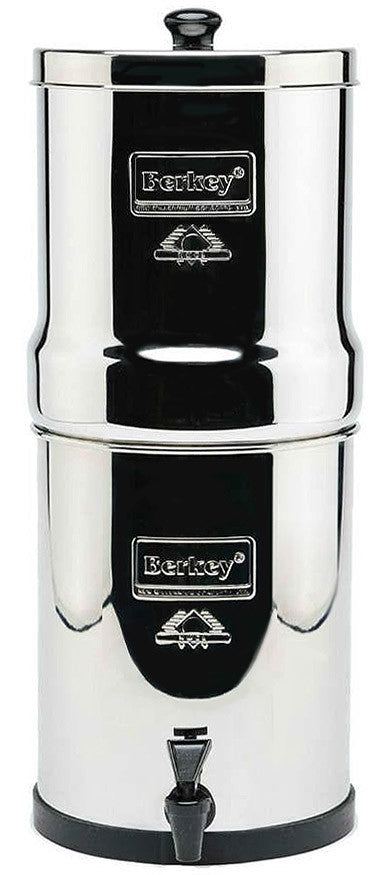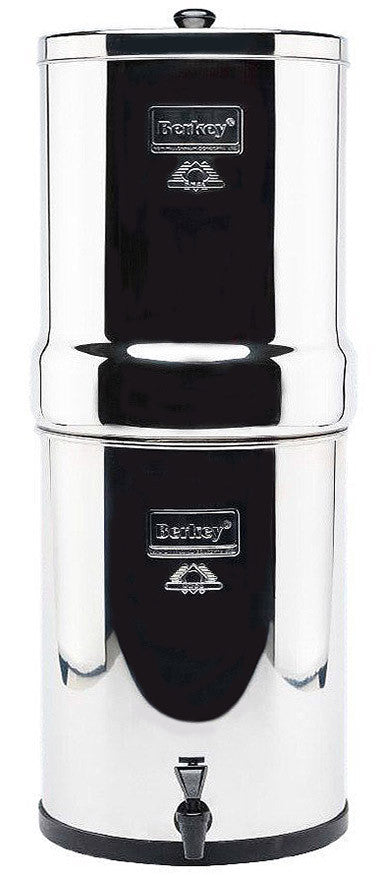
Many people avoid bottled water and switch to alternative sources. Information is available in print and online resources, and people are being educated about the environmental side effects of plastic bottles.
Furthermore, they are enlightened about the water quality of these products.
According to studies, water bottles are overpriced by big companies with almost the same quality as tap water. Americans are being robbed of their hard-earned money with items they dispose of, such as water bottles.
Therefore, many people demand improved water quality in their communities, especially tap water. They wish to switch to tap water and save money rather than buy plastic bottles.
Also, many are voicing their issues with authorities and would like to understand the water quality report. Indeed, citizens have the right to know what’s in their drinking water, according to the Safe Drinking Water Act of 1996.
This article explains the Safe Drinking Water Act of 1996 and discusses America's water situation. It also addresses how to find, read, and understand the information in the water quality report.
The Safe Drinking Water Act of 1996
The Safe Drinking Water Act passed in 1976 and implemented in 1996, greatly improved public access to information about drinking water quality.
As such, the Environmental Protection Agency (EPA) is a government agency that can set drinking water standards in all American water systems.
They have the power to monitor water utility providers and compel them to follow the standards set by federal laws. They must treat the drinking water and notify the public regarding any contamination detected in their monitoring.
Under this law, an annual water quality report must be issued for each community in America. The reports are intended to help consumers decide what water to drink. However, they can be confusing because they contain too much jargon.
Alarming Condition of Water Pollution

About 4 million Americans live in areas with poor and unsafe drinking water. Marginalized citizens often live in these areas and are more affected by the issue than wealthy families that can afford various water purifying methods.
The Environment Working Group (EWG) released a tool that records about 30 million water resources around America. The data, most from state agencies, cover 2010 to 2015. Using this tool, any citizen can type their ZIP code and get a comprehensive report on the contaminants in their water.
Although the EWG has not analyzed all the data collected, it has already done some preliminary analysis.
According to the authorities, agriculture is one of the biggest pollutants in drinking water. For example, the fertilizers and pesticides used in many places can run off into rural communities, contaminating the water resource.
EWG also discovered that the East Los Angeles Water District had the most polluted water. The district serves more than 115,000 people and found 14 contaminants in the water, which exceeded the EWG’s guidelines.
Meanwhile, the EWG found out that Merrick, New York, has the cleanest water system in America. It serves about 117,000 people and only contains one contaminant above the water guidelines issued in 2015. Also, Merrick's income was 2.5 times higher than the national average.
The database allows anyone to access updated information on water contaminants like Chromium-6. For example, about 218 million Americans have water contaminated with Chromium-6.
Understanding What is Water Quality
Water quality refers to water's physical, chemical, radiological, and biological characteristics. It refers to the condition of water according to the requirements of one or more biotic species and the needs of human beings.
People use it as a reference to set standards to comply accordingly. The most common standards for assessing water quality relate to human contact safety, ecosystems' health, and drinking water.
Water quality standards are determined by usage. Contaminants in untreated drinking water may include viruses, bacteria, protozoa, and inorganic contaminants like metals and salts.
Furthermore, organic contaminants such as industrial petroleum, herbicides, pesticides, and medical and radioactive wastes can also contain organic contaminants.
Meanwhile, water quality can sometimes depend on the ecosystem and the local geology of the community. It can also pertain to the disposal of sewage, materials thrown by big industries, and the overuse of water sources.
The EPA establishes the limits on contaminants that must be found in tap water in public water systems in the United States. Meanwhile, the FDA prohibits contaminants in bottled water, and companies must protect public health.
Water Quality Report Basic Features

Meanwhile, each community is entitled to receive a water quality report regularly. You will receive a report once the laboratory tests your area's water sample.
It contains information such as the list of the contaminants tested, the highlight of the problematic contaminants, and the concentrations.
One important feature of the water quality report is the units used to measure the contaminants in the water. For example, nitrates and metals are measured milligrams per liter (mg/L).
The equivalent of mg/L is one part per million, or ppm, which means one part contaminant per million parts of water. One ppm is 0.03 of a teaspoon of sugar dissolved in a water bathtub.
Meanwhile, units are smaller for toxic substances like agricultural wastes and pesticides, and laboratories use parts per billion (ppb). The report includes other values in specific test units, such as hardness, pH level, turbidity, and conductance.
In addition to these, the laboratory can also note contaminants that exceed the standards set by the PA DEP. As shown in Figure 1, the laboratory noted that the total iron and coliform bacteria exceed the authorities' standards.
It will be best if you keep the water quality report in a safe place. If mining activities pollute your water resource, you can present the water quality report to prove that your water supply has been affected.
Water Test Parameters
Meanwhile, the water analysis report shows some common water quality parameters.
There are three categories of water test parameters: general indicators, health risk parameters, and nuisance parameters.
These guidelines are not yet exhaustive in terms of the indicators. However, these are enough to provide you with the information, limits, symptoms, problems, and effects of such problems in the community.
Health Risk Parameters
The examples below are some of the health risk parameters and their effects. This lists the acceptable limits, possible uses, potential health effects, and contaminant sources.
-
Atrazine-Heart and liver damage
-
Benzene-Blood disorders, immune system depression
-
Lead at the tap- Impairment or disorder of the nervous system
-
Nitrates-Blue baby disease
-
Coliform-diarrhea and hepatitis
-
Radon-Lung cancer
General Water Quality Indicators
Meanwhile, general water quality indicators are parameters used to detect harmful contaminants. Such indicators can eliminate costly tests for specific contaminants; if an indicator is present, the water supply may also contain a contaminant.
For example, the lack of clarity or the turbidity of the water may indicate that there are existing bacteria on it.
Also, the pH value is considered a general water quality indicator. If the water has a high or low pH level, it can indicate it is corrosive. Corrosive water means metals like copper or lead dissolve in them as they pass through the water pipes. Here are some General Water Quality Indicators.
-
pH value An important overall measure of water quality, pH can alter the corrosivity and solubility of contaminants. Low pH will cause pitting of pipes and fixtures or a metallic taste. This may indicate that metals are being dissolved. The water will have a slippery feel or a soda taste at high pH.
-
Turbidity-Clarity of the sample can indicate contamination.
-
Total Dissolved Solids (TDS)-Dissolved minerals like iron or manganese. High TDS can also indicate hardness (scaly deposits), cause staining, or a salty, bitter taste.
Nuisance Parameters
Lastly, the nuisance parameters are the third contaminant in the water quality report. Indeed, this group of contaminants doesn't have adverse health effects. However, it can make drinking water taste bad. Also, it can reduce the effects of detergents and soaps.
Nuisance contaminants such as iron and hydrogen sulfide also cause fabric stains.
Meanwhile, hardness is another common contaminant in the water quality report. Hard water can cause the soap and detergents to have scaly deposits in the plumbs inside the home. It also disables soap to do its job. Furthermore, hard water can lead to scale buildup in the water heater plus reduce its lifeline.
Indeed, hardness can be Expressed in mg/L or grains per gallon (mpg). However, laboratories prefer to use gpg, equivalent to around 17 mg/L or ppm.
Most people disagree with categorizing water as 'hard' or 'very hard.' However, in all kinds of water treatment, you must carefully consider the pros and cons of softening the water before purchasing a water softener.
Decoding the Contaminants in Your Water
Apart from these categories, you will also find codes and abbreviations in the water quality report that can be technical and hard to understand. Here are some of the terms included:
- MCL: Refers to the Maximum Contaminant Level. This is the highest level of contaminant permitted in the drinking water in your area. This is the health-based guideline set by the EPA.
- MCLG: This refers to the Maximum Contaminant Level Goal. The minimum level of contaminants is allowed in drinking water, and there is no known or expected health risk. MCLGs can provide consumers with a safety boundary for each contaminant detected.
Options to Try Other Than Municipal Water

Indeed, the municipal water system provides safe drinking water, but sometimes, the minerals are not removed, and the water becomes hard. This leaves an unwanted stain and makes cleaning a real challenge.
If you want great-tasting drinking water, you can invest in home water treatment, such as a reverse osmosis water filter system or a water softener.
Water softeners remove minerals like magnesium and calcium and protect your home's appliances. They can also enhance your shower experience and provide crisp water from the tap.
If you are still unsure about the water quality report, you can have your water source professionally tested. Groundwater can be easily contaminated, so homeowners must have their water wells tested annually.
Conclusion
The water quality report is important because it informs you about EPA water quality standards violations. It can also inform you that the water is unsafe for consumption.
Public utilities comply with the standards, and more than 90% of water systems comply with EPA regulations.
The water quality report also lists all the detected contaminants. The EPA sets the maximum level of contaminants, the Maximum Contaminant Level (MCL). This is the allowed level of drinking water according to current technology's treatment and filtering capabilities.
Finally, the report can also show the potentially harmful substances in the water below the required legal limit. As such, you and your family can take some precautionary measures and look for an alternative method to make drinking water safe for consumption.
← Older Post Newer Post →





